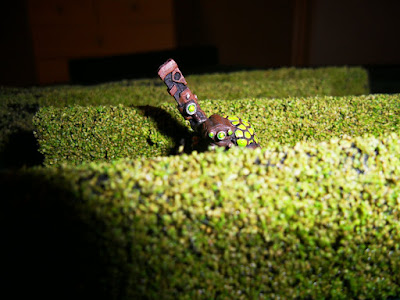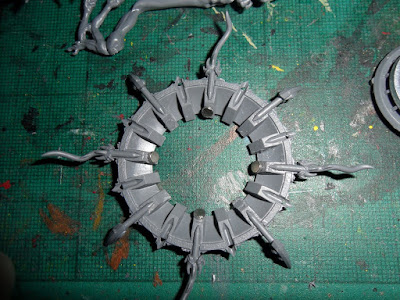As you can see this will be no ordinary Blog, here I will be posting all work in progress images and texts for my Pre Rubric Thousand Sons force that I have been working on since obtaining the Burning of Prospero box set. I am building these for use in 40k as there are no 30k players in my area.
The narrative so far is that these Thousand Sons are unaffected by the Rubric of Ahriman, which leaves them as regular marines but susceptible to the random mutations as a result.Why this is the case I am currently undecided. To represent this on the table I will be using no Rubrics and will be using the Black Crusade Detachment from Traitors Hate for the free mutations.
So how did I get this idea? Well originally when I first purchased the Betrayal at Calth boxed game last year, I fully intended on building a formidable Iron Warriors force out of it. Shortly after the Burning of Prospero was released and I had already decided that I needed another faction for when i'm playing the board game with a non-40k player, so I snapped this up and had the obvious choice of either Thousand Sons or Space Wolves, naturally I went for the traitor faction.
As I assembled this army, I started to think about how I could use it in 40k, they are Thousand Sons for sure, but they look nothing like the Rubric Marines and Rubric Terminators, these are just regular Marines and Terminators, i'll just confuse myself and others if I start proxying these guys. I read over the narrative for the Thousand Sons and learned that up until the Rubric of Ahriman, the legion was susceptible to random mutations related to the use of their psychic powers. Now the models are 30k, so they pre-date the Rubric of Ahriman, and there are already plot devices that can explain a warband of Thousand Sons in the year 40'000 not being mustly Rubrics. We have the unusual flow of time in the warp resulting in time travel, and lets not forget the Blood Ravens, they are descendants of the Thousand Sons and are not Rubrics themselves, so I have plenty of room to figure out that part of the narrative.
I added in some appropriately converted and painted raptors from 2 years back, some unpainted Possessed and magnetised a Contemptor to act as my Helbrute. Now the force is beginning to take shape. Speaking of which, as I began to add models to the force, I needed a structure to work to, mainly to stop me from overbuying models, so I looked to the Traitor Legions book that has recently been released. This has rules for the Thousand Sons legion, however it's detachment requires the use of Rubrics and Tzaangors, the first of which my narrative doesn't allow, and the second I just don't want. So I looked back to Traitors Hate from last year and fell in love with the Rules allowing me to just keep on mutating characters every turn. A Chaos Warband and a single Spawn is the minimum that needs fielding, and I pretty much already have that.

































